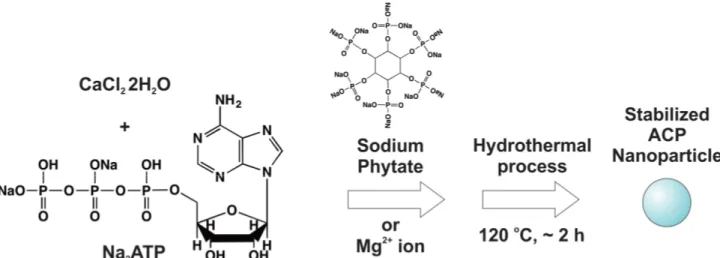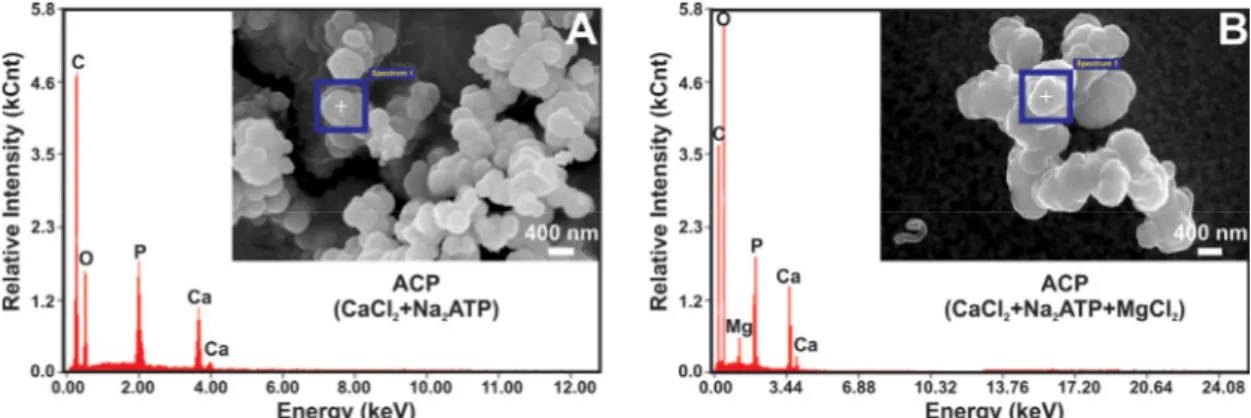Article
https://doi.org/10.14478/ace.2018.10891)
1. Introduction
Calcium phosphate (CaP) is one of the most important biomaterials with outstanding biocompatibility[1] because their mineralized form known as hydroxyapatite (HAP) is one of the main inorganic con- stituents of vertebrate and human bones and teeth[2-6]. Synthetic HAP has been developed for biomedical applications such as tissue en- gineering and regenerative repair of bones and tooth[7]. Among vari- ous forms of CaP including HAP, amorphous calcium phosphate
† Corresponding Author: Pusan National University,
School of Chemical, Biomolecular, and Environmental Engineering, 2, Busandaehak-ro 63beon-gil, Geumjeong-gu, Busan 46241, Korea Tel: +82-51-510-2397 e-mail: sungwook.chung@pusan.ac.kr
pISSN: 1225-0112 eISSN: 2288-4505 @ 2018 The Korean Society of Industrial and Engineering Chemistry. All rights reserved.
(ACP) is one of the particular phases that formed first from a super- saturated aqueous solution of calcium (II) cations (Ca
2+) and phosphate (III) (PO
43-) anions with almost no long-range and atomic scale order- ing that typical crystalline CaPs, such as HAP and tricalcium phos- phate (TCP) have. Deciphering the role of ACP during the formation of bone minerals is critical to understand the process of bone for- mation[6]. Moreover, ACP has a superior osteoconductivity and bio- degradability than TCP and HAP and can promote cell proliferation and promotion via enhanced alkaline phosphatase enzyme activities[8], which makes ACP a promising candidate as one of the novel bio- materials potentially employed in the area of regenerative medicine.
The structural unit of ACP has been proposed to be a spherical clus- ter known as “Posner’s cluster”. This neutral cluster composed of cal- cium and phosphate ions has an empirical formula of Ca
9(PO
4)
6with an approximate diameter of 0.9~1.4 nm[6,9]. The resulting ACP has
비정질 칼슘 포스페이트 나노 입자의 합성과 특성
한지훈⋅정성욱*,†
부산대학교 화학공학⋅고분자공학과 , *부산대학교 화공생명⋅환경공학부 (2018년 8월 23일 접수, 2018년 8월 27일 심사, 2018년 9월 17일 채택)
Synthesis and Characterization of Amorphous Calcium Phosphate Nanoparticles
Ji-Hoon Han and Sungwook Chung
*,†Department of Polymer Science and Chemical Engineering, Pusan National University, 2, Busandaehak-ro 63beon-gil, Geumjeong-gu, Busan 46241, Korea
*

